GRID SEQUENCER
We will now approach the core of the instrument : Twelve squares (x2) to rule them all and collide harmonics.
COLLIDZ° concept is based on a powerful sequencer, which makes possible to create a succession of notes, thanks to a trigger device when rising and falling blocks, end up reaching the bottom of the grid in which they move.
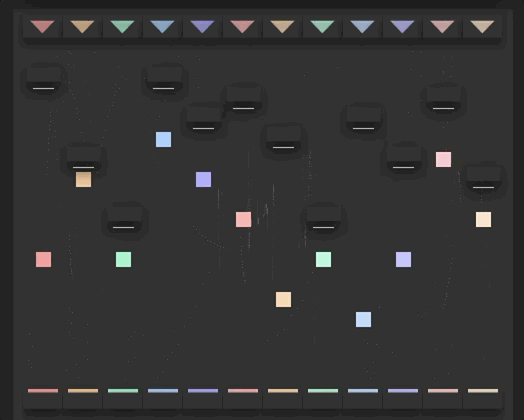
BASIC ELEMENTS
First of all, the clock of Reaktor 6 or of the host sequencer (Ableton Live, Maschine, Logic, Cubase, etc. when Reaktor is used as a plugin), must be active, so that the internal sequencer of COLLIDZ can run.
Then, press PLAY/PAUSE (color green) in order to launch the sequence. When this button is in pause, all the 12 tracks of the grid are muted.
The STOP ALL/INIT button aims to disengage the 12 tracks of the sequencer or to activate them all, this in a single gesture.

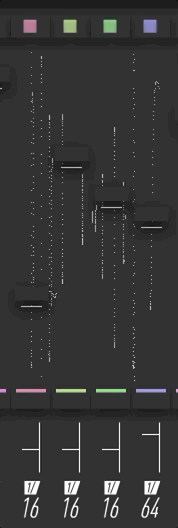
PLAY BUTTON : This button acts on the track below, by activating or deactivating it.
LENGTH : Sets the scroll length of the animated block, defined by a number of steps.
TRIGGER BUTTONS : This switch has 3 actions. It allows you to view the track's note settings, trigger that same note and also act as a note holder, especially useful when BEAT REPEAT mode is enabled (see later in the BEAT REPEAT section).
SPEED : Determines the running speed of the track, in sync with the BPM.
RANDOM NOTES

- RANDOM NOTES (x12) : When these buttons are enabled, the related track is ready assigned to "Random" Mode.
- ADD RND : Enables the "Random" mode that will produce +50% of additional notes, to the assigned midi tracks.
BEAT REPEAT MODE

BEAT REPEAT mode is particularly interesting when the notes are played outside of the sequencer action. Each manually triggered note or track will be played in total synchro with the internal or external BMP, but they are subject to the previously defined synchro speed. This gives rise to both improvised and synchronized playing, for a very inspiring function to create arpeggios and other beats.
When enabled under the sequencer action, additional notes are added later on the track, over an interval defined by the SPEED function and over a length defined by the SUSTAIN controls.
HOLD (x12) : In its default position, BR mode is inactive and the sustain control adjusts the sustain length of the triggered note. Otherwise, it assigns the tracks that will be assigned to Beat Repeat, and the SUSTAIN control will set the approximate number of repeats.
SUSTAIN : Sets the length of the gate event or the number of repeats when BR mode is activated.
By the way, the BEAT REPEAT button at the bottom of the interface enables this note playing mode and applies it only to the assigned tracks.
ADDITIONAL NOTE (ADD+1)
One additional square (note/gate) can be applied inside one of the 16 steps of the grid. This feature aims to create rhythmic quavers, but can also be used in combination with the OFFSET command, in order to play with one unique square inside a specific zone of steps.
POSITION : Sets the position of the additional square (note/gate) inside the 16 steps grid.
ADD STEP : When enabled, every additional square pre-assigned and positioned on the grid will be played.
RND +STEP : This macro command authorizes the generation of random positions for all the additional squares present on the grid of the sequencer. The higher the value is, the more the position will change from the initial value. At 0% of this command returns to the pre-established positions.
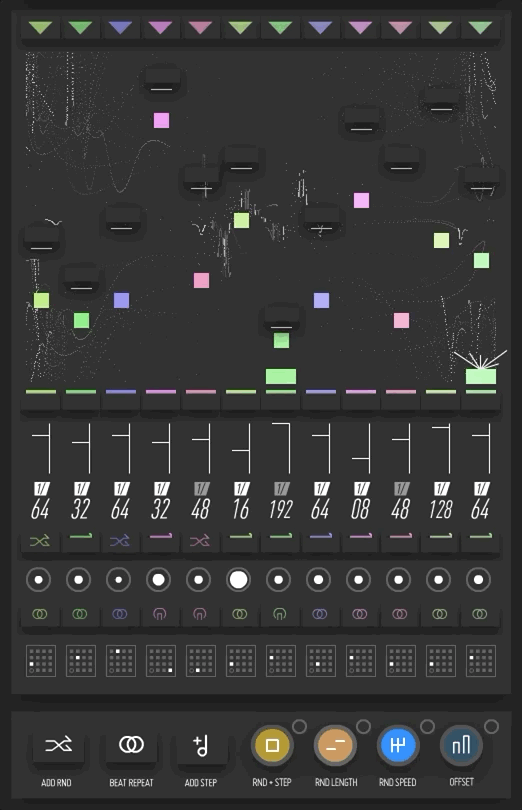
RANDOM LENGTH
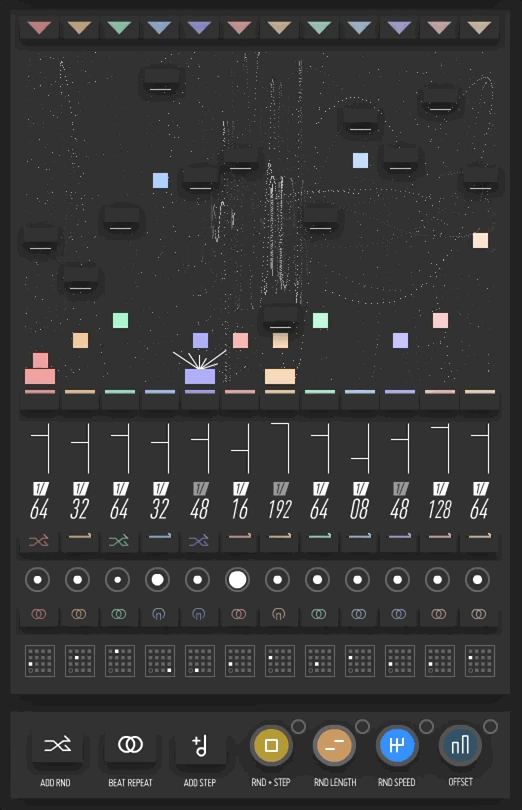
GLOBAL OFFSET
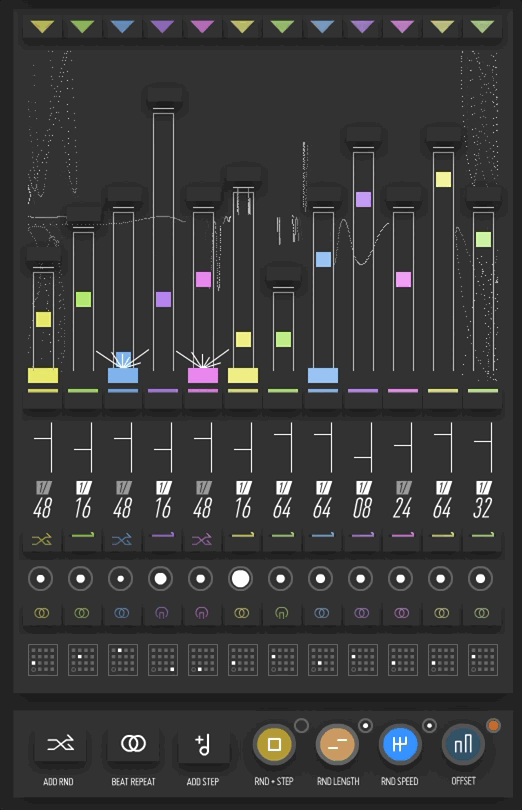
Even more, when the ADD STEP is activated, because the additional notes/gates (squares) which are scattered on the grid, find themselves trapped in different time zones of the grid sequencer, according to the number of steps (LENGTH) and the position of the 'OFFSET.

In the end, once a pattern is programmed on the grid sequencer, it is possible to make subtle variations, even explode it, thanks to these 4 macros, RND STEP, RND LENGHT, RND SPEED & OFFSET; while keeping the possibility of returning to all its default values when they are turned back to 0%.
BPM & TEMPO FEATURES
At the bottom right of the instrument interface, you can find the tempo control module.
COLLIDZ° is generally synchronized with the BMP of Reaktor 6 : the internal REAKTOR 6 clock when in a stand-alone application or the DAW clock when REAKTOR is running as a plugin.

CUSTOM BPM : allows to enable the custom BPM displayed on the left.
DIVIDE : When enabled, the current BMP ( custom internal or external) is split/divided into 2 (for instance, if defined at 180 BPM, the sequencer will run at 90 BPM)
SHUFFLE : Add some real-time swing effect to the current sequence.
RND VELOCITY : Adds random velocity values to the sequence. At 50%, the rendering of some notes will be dynamically changed, at 100% some notes can be totally attenuated or boosted, and at 0% no effect.